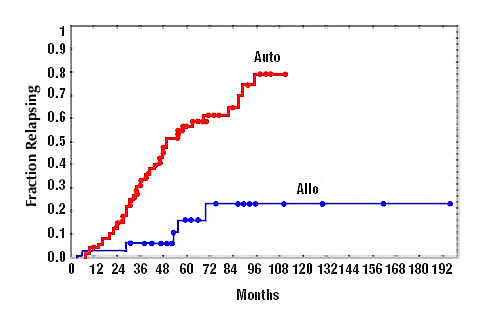 |
||||||||||
Date: August 1, 2026
by Chaya Venkat

We are fortunate that a group of experts under the leadership of Dr. Marco Montillo in Milan has produced a document worthy of our study. Among the contributing authors is Dr. Terry Hamblin, who needs no introduction to the CLL patient community. In his article “Are We There Yet?” written exclusively for our readers, he discussed the state-of-the-art therapy choices available to us today. That question, “Are we there yet?” brings up another question, “Where are we?” The new article from this panel of top rated experts gives us a bird’s eye view of where we are now. A lot has changed just in the past decade. Montillo, et. al., provide a much-needed recap of where things stand, in a clear and readable fashion. It is also a must-read article for your local oncologist, if he has not done so already. The abstract below contains a link to the full-text article in PDF form, a document that should interest both you and your oncologist. Below are some of the highlights I have gleaned from reading this article. But reading our review is no more than dipping your toes in the water. I hope by the time you finish reading our review we will have tempted you to jump in for a full swim by reading the original article for yourself.
Article from Haematologica (Full-text PDF)
Haematologica. 2026 Mar;90(3):391-9.
Chronic lymphocytic leukemia: novel prognostic factors and their relevance for risk-adapted therapeutic strategies.
Montillo M, Hamblin T, Hallek M, Montserrat E, Morra E.
Division of Hematology, Niguarda Ca' Granda Hospital, Milan, Italy.
BACKGROUND AND OBJECTIVES: Many years ago it was established that prompt treatment of early stage chronic lymphocytic leukemia (CLL), the stage at which almost two-thirds of CLL patients present, has no benefit over a management of watching and waiting, then treating progression. However, this fact was based on series treated ineffectually with chlorambucil, which were not stratified according to prognostic markers.
DESIGN AND METHODS: The prognosis and clinical course of CLL are heterogeneous. While some patients may have a normal life expectancy without requiring treatment, others die of drug-resistant disease as early as within two years of presentation. However, unlike the situation in non-Hodgkin's lymphoma, there is no standard Prognostic Index that can be used to group patients with CLL according to likely outcome or to guide treatment.
RESULTS: A number of clinical and biological factors of prognostic relevance, which may add to the classical assessment provided by the staging systems, have been identified. These include clinical characteristics, such as age, gender and performance status, and laboratory parameters reflecting the tumor burden or disease activity, such as lymphocyte count, lactate dehydrogenase (LDH) increase, bone marrow infiltration pattern or lymphocyte doubling time. Recently more informative prognostic parameters have been identified: serum markers such as soluble CD23, b2-microglobulin or thymidine kinase and genetic markers of tumor cells, such as genomic aberrations, gene abnormalities (p53, ATM), the mutation status of the variable segments of the immunoglobulin heavy chain genes (IGVH) or surrogate markers for these factors, such as CD38 and ZAP-70.
INTERPRETATION AND CONCLUSIONS: From the clinician's perspective the importance of this new knowledge is how it affects treatment. It is now possible to produce molecular remissions even in advanced disease using combinations of purine analogs and monoclonal antibodies. Moreover, potentially curative therapeutic modalities such as autologous and allogeneic stem cell transplantation are becoming safer. Clinical trials of effective treatment stratified by more reliable prognostic markers are surely now warranted.
PMID: 15749671
____________
The very first sentence of the abstract caught my eye. Even today, newly diagnosed patients are told to “Watch & Wait” (the acronym W&W is often interpreted by patients as “Watch & Worry”) because (they are told) there is no advantage to early treatment. If we pushed them to cite chapter and verse, I wonder how many busy local oncologists would actually be able to defend this glib statement. It turns out this particular gem of conventional wisdom comes from experience with a series of patients who were treated with chlorambucil more than a decade ago, with no attempt made to classify the patients into risk based prognostic groups. We now know CLL comes in many flavors, and we have many more drugs than chlorambucil and therapies that can be tailored to the needs of the individual patient. It is time to relegate the one-size-fits-all strategy of “W&W” to the history books. The importance of the new knowledge is in how it affects therapy choices. If your oncologist is still a firm believer of slam-dunk W&W and sees no value in modern prognostics-based therapy, we respectfully suggest it is time to find yourself another oncologist.
The authors correctly identify use of FISH (interphase Fluorescent In Situ Hybridization) to identify chromosomal aberrations as one of our most powerful prognostic tools (FISH-ing for Answers, Cytogenetics of ATM and P53 ). The article gives the latest and possibly most unbiased breakdown in patients with the various chromosomal aberrations, and I have put the information in the context of our popular “Bucket” classification (What Type of CLL Do You Have?). Most labs today use just four probes in their FISH panel, which means they only look for 12 trisomy, 13q, 11q and 17p defects. A whopping 80% of CLL patients have one or more of these defects, and an additional 10% can be captured if we also include probes for 6q21 deletion and 14q32 translocation. My next project is to convince Quest Diagnostics to add these two additional FISH probes to their prognostic package.
| Chromosomal Defect | Characteristcs & Risk Bucket | Percentage of Patients with Defect |
| Trisomy 12 | Bucket B | 16 |
| 13q Aberration Only | Favorable Bucket A |
55 |
| 11q Aberrations | Large lymph nodes Need treatment soon Bucket C |
18 |
| 17p Aberrations | Need treatment soon Fludarabine may not work Bucket C |
7 |
| "Normal" Karyotype | Favorable Bucket A |
18 |
Even more powerful than FISH in predicting the prognosis of individual CLL patients is the IgVH mutations status. Until recently, only research labs at major cancer centers were able to do this test, and only patients who had access to such centers could benefit from its powerful prognostic value. Not so anymore. We now have IgVH gene mutation status as one of the tests in the prognostic package offered by Quest Diagnostics, Inc. (Prognostic and Monitoring Test Packages) and you would be foolish not to take advantage of this resource.
Here is quick take on what the IgVH mutation status means for us chickens without medical degrees. B-cells have receptors on their surface called, appropriately enough, B-cell receptors or BCR. CLL cells are no exception. The BCR is a “Y” shaped receptor, anchored by the tail of the “Y”. Think of the tips of the “Y” as precisely shaped claws used to identify specific antigens with exactly the right shape to mate with the claws. The scientific name for the BCR claw tips is “IgVH”. “Memory” B-cells are those that have already been imprinted by one particular antigen, their claws have been mutated and shaped for evermore, to mate with this particular antigen. They are called memory cells because they can ‘remember’ this particular antigen that they target. If the original patriarch grand-daddy malignant cell that gave rise to your CLL clone was a memory cell, then each and every one of your CLL cells will have a cast-in-concrete fixation on one particular antigen to the exclusion of all others, your CLL is of the good “mutated IgVH” type. Not so for folks with un-mutated IgVH, their CLL cells have BCR tips that will mate promiscuously with a wide variety of antigens. This ability to mate with and respond to a wide range of antigens makes unmutated IgVH spell trouble. An easy way to remember this: mutated IgVH genes means the CLL cells are monogamous, responding to the charms of their one true love antigen. Unmutated IgVH CLL cells respond promiscuously to all and sundry antigens and carry the penalty of their wayward behavior.
Below is a very telling chart from this paper of how IgVH mutation status predicts survival.
IgVH Mutation Status and Survival
Risk-adapted Strategies, Marco Montillo, et al., Haematologica

The article also discusses the value of other prognostic indicators such as CD38, ZAP-70, serum levels of beta-2-microglobulin (B2M), CD23, thymidine kinase (THK), lactate dehydrogenase (LDH). If you have abnormal levels of any of these markers and would like to learn more about them, I suggest you read the full text of the article to get all the juicy details.
This is another chestnut that has outlived its usefulness. Before the advent of modern prognostics, oncologists comforted their newly diagnosed patients thus, and often added that you are more likely to die of old age or getting hit by a truck as you cross the road. True, if you are one of the lucky IgVH-mutated types, and you are, say, 55 years old, median survival of 300+ months (that is 25 years, give or take) sounds pretty good. But modern prognostic classification has shown that CLL patients with poor prognoses are very likely to die CLL-related deaths, often as a result of infections. Moral of the story: if you are an unfortunate resident of Bucket C, you need to be a lot more vigilant about your CLL, especially in terms of opportunistic infections. How would you know this, unless you got the prognostic testing done in the first place? Ignorance is most definitely not bliss, where CLL is concerned.
The article goes on to discuss the various therapy choices now available to CLL patients, and I have summarized them below for your easy reference:
The article describes many of these therapy options in greater detail, including the latest perspective on the risks and rewards associated with them. There are few free lunches around, and it really helps to know the “cost” of what you are buying as you make your choices.(Shopping for Therapies). Adding on more and more bells and whistles until the drug combinations start to look like an alphabet soup is a real temptation. This approach surely improves the response statistics and that is one of the yardsticks that researchers use to keep score. But remember, this whole battle of “maximum tolerable dose”and “non-overlapping toxicity” is being fought in your body, you are at the wrong end of the sharp infusion needle, not the guy wearing the white coat. It is too early, yet, to judge where the dust will settle down in many of these drug combinations. Will the high CR rates and high pcr negative molecular remissions mean high rates of real cures? We sincerely hope so, but only time will tell if this is indeed the case, and if the price tag justifies the final results. In the meanwhile, that old saying of “Buyer Beware” applies when making therapy choices.
Our recent reviews of the latest Hutch articles on mini-allo transplants (The Only Real Cure Out There, for Now) have increased the level of interest in the subject. One reader questioned our choice of words for the title, that we labeled allo transplants as the only real “cure” out there, for now. The reviewed article has a nice table citing statistics from many of the pivotal stem cell trials done in CLL, but I was glad to see the graph below comparing autologous and allogeneic transplants. A picture is worth a thousand words.
Autologous vs. Allogeneic Transplants
Risk-adapted Strategies, Marco Montillo, et al., Haematologica

The citation below the graph reads “unpublished data”, which is a shame. The blue line shows the relapse rates of CLL patients who have undergone allo transplants. Notice that the line flattens out after some time - no further relapses after that point. The patients who remained relapse free beyond that time are “cured”, in the plain English sense of that term. The red line depicting autologous stem cell transplants harvested from the patient himself does not look anywhere as good. The relapse rate is higher at each step of the way, and the real bummer is that the curve never flattens out. Patients continue to relapse and there is never a time when they are 100% completely off the hook and home free. This is how the authors phrased the take home point. The highlighting is mine.
“As regards the curative potential of ASCT (autologous stem cell transplants), in a prospective MRC pilot trial assessing the outcome of previously untreated patients with CLL who received fludarabine as debulking followed by ASCT, more than two-thirds of patients achieved a molecular remission, as determined by PCR for immunoglobulin heavy chain gene re-arrangements, in the first six months following their transplant. Nevertheless, these molecular remissions are not durable and their loss announces the clinical relapse.”
“Data collected after RIC (Reduced Intensity Conditioning or mini-allo transplants) from 29 European Group for Blood and Marrow Transplantation centers have been recently reported for 77 patients with CLL: The 2-year probability of relapse was 31%with no event occurring later than 12 months after transplantation.”
The latest Hutch data that we reviewed is even more bullish than that. It is interesting to note that in the European RIC study no relapses were seen past the 12 month point! Based on everything I have read thus far, I am willing to bet that as we get better in managing our donor stem cell banks, improving the chances of finding a perfect 10 point match for more patients, and fine-tune the mini allo procedures to enhance the good graft-versus-leukemia and graft-versus-infections, while controlling the bad graft-verus-host-disease (GVHD) , we will see far fewer auto transplants, or full strength myeloablative allo transplants. Mini-allos are the way to go, it seems. Getting the word out, getting more people to volunteer to be stem cell donors, these are so important to us as patients that I am bewildered why our patient community is not more pro-active on this front. I am going to say this phrase until you are sick of it: the life you save may well be your own.
The authors summarize their take on where we are, right now. The median survival of CLL patients has increased from the 5-6 years quoted in prior decades to where we can expect the average CLL patient to survive 10 or more years. That is welcome news indeed! The authors re-emphasize the value of modern prognostic testing, over and beyond the conventional Rai and Binet staging systems of yesteryear, and the use of this information in making therapy decisions. Below is a quote from their concluding remarks:
It is nice to see our leading researchers putting things in such blunt and unequivocal terms. The drum beat is getting louder and there are fewer excuses for either your insurance company or your “old fashioned” local health care provider to refuse your request for Prognosis at Diagnosis. I am aware that you do not always have the luxury of firing a less than up-to-date local oncologist. It may become necessary for you to take a more active role in his CME (Continuing Medical Education). That is where latest articles such as these by world renowned experts are so important - they give you the ammunition you need to negotiate with your doctor. If getting hold of expert papers such as this, printing them out and taking them to your doctor at your next appointment means you get better care, I suggest you do it! Our reviews are cheat sheets for your use, so that you can better organize your arguments. If you need our help in locating the full text articles, all you have to do is write to us.
 Enter Keywords: |
———
Disclaimer: The content of this website is intended for information only and is NOT meant to be medical advice. Please be sure to consult and follow the advice of your doctors on all medical matters.
Copyright Notice:
Copyright © 2026-2007 CLL Topics, Inc. All Rights Reserved.
All materials contained on this site are protected by United States copyright law and may not be reproduced, distributed, transmitted, displayed, published or broadcast without the prior written permission of CLL Topics, Inc. You may not alter or remove any trademark, copyright or other notice from copies of the content.
However, you may download and print material from CLLTopics.org exclusively for your personal, noncommercial use.
———
